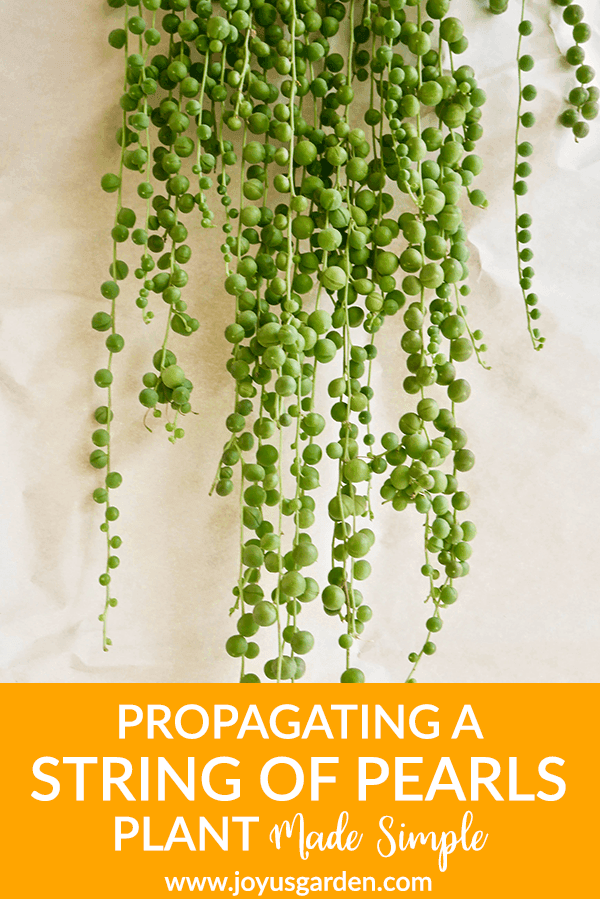Burro’s Tail Plant: Growing A Sedum Morganianum Outdoors
This succulent is one beautiful plant due to its thick trailing nature and fleshy blue-green leaves. Here you’ll find a guide to growing a Burro’s Tail plant outdoors in temperate regions.
If you’re looking for a Sedum Burro’s Tail to grow indoors, the Sedum morganianum burrito (or Baby Burro’s Tail) is the one commonly sold in the houseplant trade. I’ll soon be doing a care post on growing this variety in your home.
The botanic name for this succulent is Sedum morganianum. Common names are Burros Tail, Donkey’s Tail, Horse’s Tail, and Lamb’s Tail. It’s confusing when a plant has this many but I wanted to list them in case you know it by any of these other names.
There’s a bit of going back and forth on the Burro’s Tail vs Donkey’s Tail but I learned and know them as the same plant. The Baby Burro’s Tail is a variety of Sedum morganianum. If you’re growing a Baby Burro’s Tail (Sedum “Burrito) outdoors, the care is the same.
This was originally written when I lived in Santa Barbara, CA (zone 10a & 10B). I now live in Tucson, AZ (zone 9a & 9b) which is a totally different climate. I’ll give insights at the end (use the table of contents below) to share what I’ve learned about growing a Burro’s Tail succulent outdoors in two very different USDA plant hardiness zones.
This post may contain affiliate links, you can read our policies here.
Burro’s Tail Traits
Growth Rate
Mine grew thickly but I’d say the growth rate is slow to moderate depending on the light levels.

Size
Burro’s Tail plants eventually grow to 4′ long which will take around 6 years or so. As it grows it gets very thick with those long stems heavily laden with overlapping plump, juicy leaves that form a groovy braided pattern.
Uses
This is definitely a hanging plant so don’t try to use it any other way. It’s a good idea to grow it in a hanging container so the pendulous stems can trail over and put on a beautiful display. 1 of mine grows with other plants over the side of a large plant pot as a spiller.
It happily resides in a large square terra cotta pot with my now 5-year-old Coleus “Dipped In Wine” (yes, they’re technically perennials) and a Golden Weeping Variegated Boxwood which I brought home from Kew Gardens as a wee cutting. One would not think to use these 3 plants in a container together but it works for me here in my Santa Barbara garden.
As you can imagine, mature Burro’s Tail plants get very heavy. This plant is not for a flimsy pot with a flimsy hanger. It’s best grown in a hanging basket, in a large pot like mine with other succulents, in a pot that hangs against a wall, or trailing out of a rock garden.
More info: 7 Hanging Succulents To Love
Burro’s Tail Plant Care/Sedum Morganianum Care
Light Conditions
Sedum morganianum likes bright shade and does best in indirect light. It’ll burn in the strong, hot direct sunlight. Mine gets partial sun in the morning which it prefers.
And now, because my neighbor cut down two of his pine trees last year, it gets some bright light from the afternoon sun too. Santa Barbara is foggy in the morning and late afternoons in the summer.
Conversely, if not getting enough sunlight, your Burro’s Tail will look shriveled, and the foliage a bit stunted and pale.
More info: How Much Sun Do Succulents Need
Watering
All those plump leaves store water so be sure not to water too frequently. It’ll succumb to root rot if you do. My Burro’s Tail is well established (around 5 years old) and is in a large pot so I water it every 10-14 days.
Watering thoroughly also helps some of the salts (from the water and fertilizers) to flush out of the pot. The rainwater mine gets in the winter helps with that. This plant does best in pots with at least 1 drainage hole so the excess water can freely flow out.
As a rule, plants in porous clay pots will dry out faster as well as those in smaller pots.
I water a bit more often in warmer, sunnier weather. When cooler winter temperatures set in, I water less often. You’ll have to adjust the watering accordingly to the weather conditions. In a nutshell, let the soil dry out before watering again.
More info: How Much Water Do Succulents Need
Temperature
Santa Barbara is a warm climate, the average low temperature for the winter months hovers around the low 40s. We occasionally dip into the thirties but not for more than a couple of nights. Mine is up against the house and shows no signs of stress during those brief chilly spells.
Our average summer temps are in the mid to high 70s which is ideal for the Burro’s Tail.
Fertilizing/Feeding
I say, not too much or too often. 2-3 times a year during the active growing season for those growing in pots is sufficient.
I use balanced plant food, diluted to half strength. My current favorites for succulents are Maxsea All-Purpose (16-16-16) and Foxfarm Grow Big (6-4-4). These are the 2 foods I use for all my other succulents growing indoors and outdoors too.
I also use a little worm compost/compost blend upon planting. Every 2 years I’ll top my plants with this blend in early spring for a little extra boost.

Soil Mix
Like other succulent plants, a Donkey’s Tail needs to grow in a mix with good drainage and aeration. The water needs to freely drain out. It’s best to use chunky or gritty soil specially formulated for cactus and succulents.
I used to buy mine at California Cactus Center near Pasadena. You can add horticultural grade sand and pumice (or fine lava rock, gravel or perlite) to lighten up whatever potting soil you have.
For almost 3 years now, I’ve been making my own succulent soil. You can find the DIY Succulent Soil Recipe here. It’s a fast-draining soil mixture that my outdoor and indoor succulents do very well in.
If you don’t want to make your own, there are plenty of online sources to buy the mix. Brands I’ve used include Dr. Earth, EB Stone, Bonsai Jack, and Tanks’. Other popular choices are Superfly Bonsai, Cactus Cult, and Hoffman’s.
My secret planting weapon is worm castings. Your Burro’s Tail would love a bit of that too. By the way, I top dress all the containers in my garden with a mixture of organic compost and worm castings every spring.
More info: Succulent Soil Mix
Repotting
The best time to repot is spring and summer. Early fall is fine in this temperate climate with mild winters. That being said, I repotted a succulent in January because it fell and the pot broke. It grew fine; just know that the warmer months are optimum.
Let me give you a word of warning here. When repotting a Burro’s Tail succulent, leaves will fall off those trailing stems. I have a trick to prevent too many of them from falling off when repotting which you can read below.
Burro’s Tail plants don’t have an extensive root system so no need to repot them too often. If need be, every 5 years or so is fine, or if the plant is showing signs of stress which could be caused by the plant being potbound or if the soil is old and needs to be refreshed or nourished.
I generally go up 1 pot size. For example, from a 2″ or 3″ to a 4″ pot and from a 4″ to a 6″ pot.
Repotting every 3 – 6 years will be fine. How often depends on how your Donkey’s Tail is growing and the pot size it’s currently in.
More info: How To Work With Hanging Succulents Without The Leaves Falling Off
Pruning
Pruning a Burro’s Tail plant will be necessary for propagation, to control the growth, remove sickly growth, increase fullness and promote new growth to emerge at the top.
The main reason I prune mine is that over time the leaves in the middle of some of the long stems tend to fall off. I cut the stems back (this also encourages new growth to emerge at the top) and propagate the ends that still have the foliage intact.
If you’re pruning one for the first time, be aware the plump leaves fall off very easily even though the stems are thick. It’s just the nature of working with a Burro’s Tail!
The best times to prune 1 are spring, summer, and early fall.
More info: Pruning & Propagating A Burro’s Tail Succulent
Propagation
Like most succulents, a Sedum morganianum is a snap to propagate. Cut the stems to the length you want, and peel off the bottom 1/3 of the leaves. Let the ends of the stem cuttings heal over (this is where the cut end of the stem callus) for 5-14 days before planting.
When you plant your cuttings in succulent and soil mix, you might need to pin them down in the pot because the weight of the stems with those plump leaves will pull them out.
You can also propagate 1 by individual leaves which is a very slow method of propagation. Dividing a Burro’s Tail plant is an option but it’s very tricky to do because the stems are delicate and the leaves fall off like crazy. I’ve never divided 1 for that reason. The 1st post below will give you the details.
Just a head’s up on those fleshy leaves because they easily break and fall off this plant with even the slightest touch. Handle with care!
More info: Pruning & Propagating A Burro’s Tail Succulent, Propagating Succulents 3 Simple Ways
Pests
A Burro’s Tail really isn’t susceptible to a wide range of insects that I’m aware of. The only common pests that mine ever get are aphids so I just spray them off with the garden hose when I see them.
Indoors they can be prone to mealybugs but I’ve never seen 1 growing outdoors infested with them.
You can spray it with a mixture of 1 part rubbing alcohol to 6 parts water if hosing off isn’t doing the trick. There are non-toxics controls on the market that are very effective and safe for organic gardening. The post below will give you much more info.
More info: How To Control Aphids Naturally
Toxic To Pets
The good news is that a Burro’s Tail succulent is non-toxic to pets. I always consult the ASPCA for info on this subject.
Flowers
They do flower.
Mine never did on a regular basis nor did they produce them abundantly. The blooms are deep pink and emerge in clusters from the ends of the stems.
Growing A Burro’s Tail Plant Along the California Coast vs the Arizona Desert
I lived in Santa Barbara, CA (USDA zones 10a & 10b) for 10 years and had a garden full of succulents. My Burro’s Tail plants thrived and grew like crazy in this climate. That’s what this post is written about.
I brought 8 to 10 Burro’s Tail stem cuttings from the big mother plant when I moved to Tucson, AZ (USDA zones 9a & 9b) almost 6 years ago. I planted them under my 3-trunked Ponytail Palm which grew on the side patio of my former home.
It was growing against a 4′ wall on my north-facing side patio bordered by 3 or 4 large trees on the other side of the wall. I tell you this because Arizona is the sunniest state in the US but my Burro’s Tail (the cuttings all successfully rooted in by the way) had plenty of protection from direct sun.
This cozy little spot on the patio, plus the Ponytail foliage, also gave it protection from the 5-10 nights below freezing that we get every winter season.
I watered them more often here, being careful not to drench the soil surrounding the Ponytail each time. Just like in Santa Barbara, it was more often in the warmer months and less often in the colder months.

What caused my Burro’s Tail to go downhill the 2nd year was the heat. They were starting to get thin, pale, and lose more leaves than ever before. I was driving to San Diego (another great climate for growing Burro’s Tail plants outdoors) that summer so I ended up cutting off the stems that looked decent, healing them over, potting them up, and taking them to my friend.
I’ve since bought a Sedum “Burrito” that grows indoors here in a very bright window with no direct sun. It’s doing fine so inside it’ll stay.
Some succulents can handle the heat better than others but these plants aren’t among them. As I always say, gardening is all about learning!
Conclusion (5 Important Points)
Burro’s Tail care in a temperate climate isn’t hard but there are 5 important things to know. 1) They do best in bright light but with no direct hot sun. 2) They will “mush out” if watered too frequently. 3) They do best in a succulent and cactus soil mix with good drainage and aeration. 4) They grow very densely over time and the outer stems will cause the stems underneath to suffer. 5) The leaves fall off at the drop of a hat!
Enjoy your Burro’s Tail plant and all the loveliness it has to offer. We’ve done lots of posts on growing succulents indoors and outdoors so be sure to check them out.
Happy gardening,








